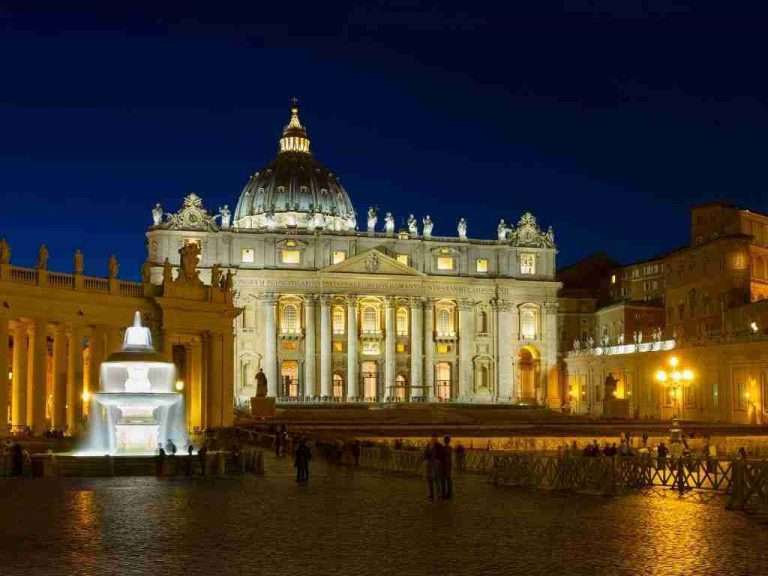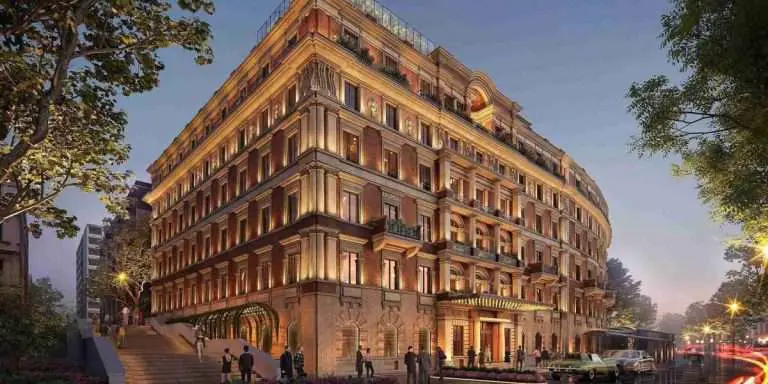
If you have never been to Rome, then you may have never heard of Bernini. But it’s nearly impossible to visit the Eternal City without seeing his art.
The prolific Baroque artist Gian Lorenzo Bernini (December 7, 1598-November 28, 1680) left his mark all over Rome in the form of fountains, statues, and soaring architecture. Here’s where to find Bernini’s most famous contributions to Rome and Vatican City’s artistic heritage.
Galleria Borghese

Bernini created some of the most iconic examples of emotive Baroque sculpture for Cardinal Scipione Borghese, an avid patron of the arts and the nephew of Pope Paul V. Visit the Borghese Museum, the former summer mansion of the cardinal, and you can view Bernini’s magnificent Apollo and Daphne, The Rape of Proserpina, and the artist’s interpretation of David. Also worth seeing here is Bernini’s self-portrait.


Galleria Borghese is located within the park of Villa Borghese. To visit the gallery, you must purchase a timed ticket in advance.
Book tickets for Galleria Borghese
Fountains of Rome
Bernini sculpted several of Rome’s most famous fountains. And all of them are free to see.

Bernini’s best-known fountain, the Four Rivers Fountain (Fontana dei Quattro Fiumi), is a massive sculpture located in the center of Piazza Navona. This work, completed in 1651, depicts the world’s four largest rivers that were known at the time — the Nile, Ganges, Danube, and Rio de la Plata. (17th century Europeans had no idea that the Amazon was bigger than the River Plate.)
Related: 7 Fountains in Rome That You Definitely Should Not Cool Off In
Bernini is credited with having built two out of the three fountains that sit in Piazza Navona. The other fountain, the Fontana del Moro (Moor Fountain), was actually sculpted by Giacomo della Porta in 1575, but Bernini contributed the central Moor statue in 1653. The statue was replaced with a copy in 1874 and the original is now located in the Galleria Borghese (see above).

The Fontana della Barcaccia, the basin-like fountain at the foot of the Spanish Steps, is another Bernini. However, this one was created by the artist’s father, Pietro, and likely finished by Gian Lorenzo following his father’s death.

My favorite Bernini fountains are located in Piazza Barberini. This square is named after Bernini’s main papal patron, Urban VIII (born Maffeo Barberini). In the center of the square — which today is basically a large traffic island — is Fontana del Tritone (Triton Fountain), which depicts the muscular sea god sitting on the splayed tails of four dolphins while blowing water through a conch shell.
Bernini’s smaller, more delicate Bee Fountain (Fontana delle Api) is nearby but much harder to spot. You will find it at the base of the Via Veneto.
Palazzo Barberini

If you are keen to visit Bernini’s fountains in Piazza Barberini, you should find some time to visit Palazzo Barberini.
Bernini was one of the chief architects of the palaces and designed the square-shafted staircase (scalone quadrato) on one side of the structure. Bernini’s artistic rival Borromini designed the staircase on the opposite end of the building.
Palazzo Barberini, just off of Barberini square, today houses one half of the Galleria Nazionale d’Arte Antica (Galleria Corsini, in Trastevere, houses the other). This huge museum has a fraction of the visitors of so many other museums in Rome, despite having some very impressive works by Caravaggio and Raphael, among others. Bernini’s sculpture of Urban VIII, as well as his painted portrait of the pontiff, are also located here.
Capitoline Museums

Bernini has a few works of art in the Capitoline Museums, including a large statue of his patron Urban VIII. But the sculpture that gets the most attention is his marble bust of Medusa. This marble depicts the famous Greek Gorgon with dozens of serpents writhing and hissing on her head.
Related: Photos of the Capitoline Hill
Santa Maria della Vittoria

Fans of Dan Brown’s book Angels and Demons will want to track down the church of Santa Maria della Vittoria, site of one of the books suspenseful scenes. Located near Piazza della Repubblica, the inconspicuous church is home to Bernini’s Ecstasy of Saint Teresa. This emotive marble shows Saint Teresa in a rapturous moment as she is visited by an angel. Bernini also created the trompe l’oeil sculpture Loggia of the Founders, located in the same chapel as Saint Teresa.
Vatican City: Saint Peter’s Square

The sweeping, symmetrical, elliptical-shaped colonnade that defines St. Peter’s Square is Bernini’s most monumental architectural legacy. Commissioned by Pope Alexander VII, Bernini began work on the piazza in 1656 and completed it in 1667.
Related: Michelangelo in Rome
Vatican City: Saint Peter’s Basilica

One of the grandest decorations in Saint Peter’s Basilica is the canopy, known as the baldachin or baldacchino. Bernini designed this bronze canopy with the twisting columns as a commission for Pope Urban VIII. It took Bernini 11 years to complete the canopy. Other works of his in St. Peter’s Basilica are the tomb of Pope Alexander VII and St. Peter’s elaborate throne (cathedra).
While the Baldacchino is beautiful, its creation was not without controversy. The mass quantities of bronze that were required for building the baldachin were stripped from the ceiling and exterior of the ancient Pantheon. This led to a famous saying in Rome:
Quod non fecerunt barbari, fecerunt Barberini
“What the Barbarians did not do, the Barberini did.”
Elephant Obelisk

Bernini’s association with the pillaging of the Pantheon tends to get overlooked thanks to his delightful little elephant obelisk. This sculpture of baby elephant topped with a small Egyptian obelisk, completed in 1667, is located in Piazza Santa Maria Sopra Minerva, the square directly behind the ancient Pantheon.
Ponte Sant’Angelo (Angel Bridge)

Rome’s Angel Bridge, Pone Sant’Angelo, is a pedestrian bridge that links the Ponte neighborhood to the Borgo and Castel Sant’Angelo. Bernini designed the bridge and sculpted two of its angels — Angel With a Crown of Thorns and Angel With the Superscription. The originals of these two statues are now located in the church of Sant’Andrea delle Fratte, not far from Piazza Barberini and the Rinascente department store.
Related: Rome’s Newest Rooftop View
Santa Maria Maggiore


If you have made it this far following the trail of Gian Lorenzo Bernini in Rome, then you will want to visit Santa Maria Maggiore. The artist is buried here, in a very unassuming tomb next to the Pope Sixtus V chapel.
Related: Papal Basilica of Santa Maria Maggiore
Last updated on November 25th, 2024Post first published on November 28, 2019






